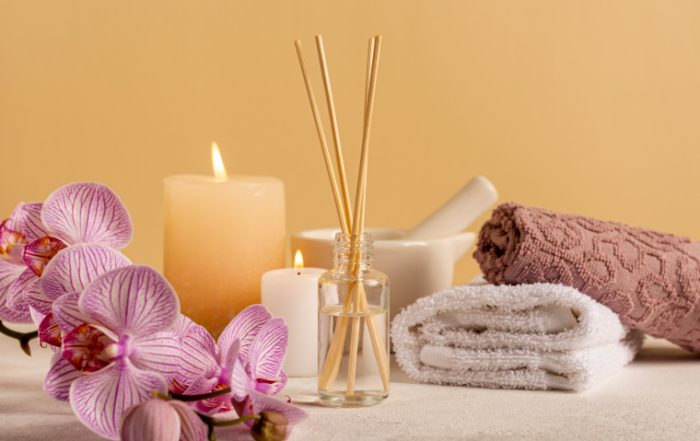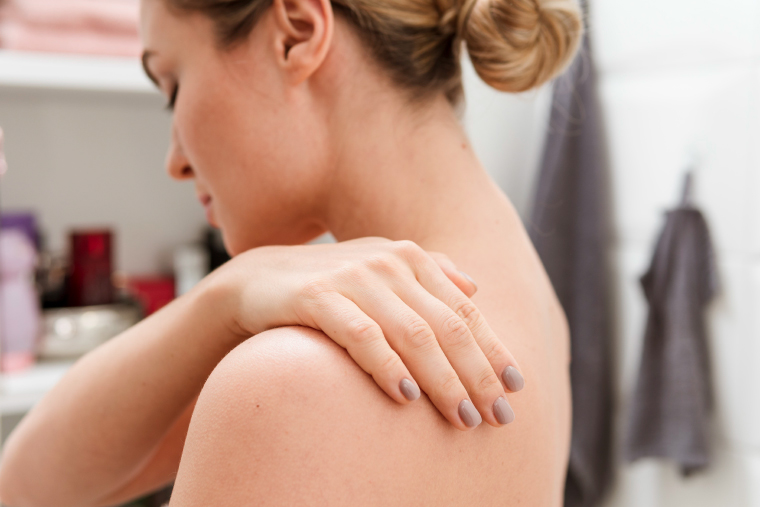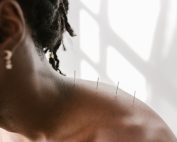MASSAGE FAQs
In my opinion there are few conditions which would prevent you from enjoying massage. You should not book a massage if you have a fever, cold/flu, or contagious skin infection. That’s it.
There are many other conditions in which your therapist may need to adapt his/her techniques (i.e. arthritis or osteoporosis) or avoid an area completely (i.e. cuts or burns). With some conditions it is a good idea to get an approval from your physician before you receive massage (cancer, certain heart conditions, pregnancy). This doesn’t mean you can’t get massage. But its always better to err on the side of caution.
Your therapist can advise you about your specific needs.
Honestly, its hard to say. Every person is unique and every condition is unique to each person. It may take one session or it may take several. You and your therapist will be able to talk more specifically about this after your first session and he/she has had a chance to evaluate your body’s tissues.
Most people feel very relaxed. Some experience a significant decrease or freedom from long-term aches and pains. Many feel a little slowed down for a short period and then notice an increase of energy, heightened awareness and increased productivity which can last for days.
If you received a deep massage, you may be slightly sore the next day – much like a good workout at the gym. Sometimes a hot shower, or a soak in the tub can ease this soreness.
After your session you should increase your water intake a bit. Just a glass or two more than normal is usually fine. This helps keep your body’s tissues hydrated and healthy.
No. (Not that there’s anything wrong with that.)
While many therapists play slower, quieter, ‘new age’ type music, you can choose to have different music or no music at all. Studies have shown that music at under 60 beats-per-minute has a calming, relaxing effect on the body and therefore can enhance your experience.
However, while this may be true, any music you like to listen to while you relax can be listened to while you get a massage. If it relaxes you and you enjoy it at home, why wouldn’t it do the same during your treatment? Our treatment rooms have ipod/iphone and mp3 connections to play your favorite music, or we can switch to your favorite Pandora or Spotify station.
Sure, if you’d like to talk go right ahead. The important thing to remember is that this treatment is all about you relaxing and enjoying the experience. Many therapists discourage talking in hopes that you will relax, let your mind float free and enter a state of massage bliss.
In many instances, people may feel more relaxed starting off talking, and as the massage progresses, enter quiet states of relaxation.
The important issue here is that there are times when you need to speak up. If the therapist is doing anything to make you uncomfortable, you should let her/him know immediately. Also, let him/her know if you get too warm or too cold, if the room is too bright, or if the pressure needs to be changed (lighter or deeper). If something is not working for you – speak up! It’s OK!
The answer is NO. There is a perception that men give deeper massages than women. This is a myth. While some men do give a deeper massage, there are men who prefer to not work so deep. The same holds true for women.
It is a matter of style, training, and therapist preference. Some therapists prefer not to give really deep sessions while others specialize in this area. If you are looking for a deep massage, it is best to simply ask the therapist if she/he does this type of work. And of course, during your session it is perfectly ok to give the therapist feedback if you would like a lighter/deeper pressure. It’s your session!
And remember, massage does not have to hurt to be effective.
“Some is better than none.”
What does that mean? Well, it varies from person to person. If you are just looking for some occasional relaxation, then a session every 3-6 weeks may be fine for you.
However, if you are looking to address a specific condition, then it is recommended to go more frequently at first and then slowly taper down to a maintenance schedule. Sometimes more frequent 30-minute sessions can be effective until your goals are met and a maintenance schedule is in place.
Frequency of sessions should be discussed with your massage therapist after your treatment when he/she has a better hands-on understanding of your particular muscular issues.
This depends on the type of massage and the depth of the strokes. A light, relaxing massage that doesn’t probe very deep into the muscles, shouldn’t hurt. With that being said, there is a ‘feels good’ hurt and an ‘ouch, stop it’ hurt. A good massage, even a really deep tissue massage, should always stay in the ‘feels good’ hurt range.
Pain can be an indication that the muscle is possibly injured or inflamed and pressure should be adjusted. Also, pain can cause you to tighten up and negate the relaxing effects of the massage. The most effective and deepest massage always works with your body’s natural response, not against it.
The average full-body massage treatment lasts approximately one hour. A half-hour appointment only allows time for a partial massage session, such as neck and shoulders, back or legs and feet. Many people prefer a 60 to 90-minute session for optimal relaxation. Always allow relaxation time prior to and after the session.
Make yourself comfortable. If your therapist wants you to adjust your position, she/he will either move you or will ask you to move what is needed. Otherwise, change your position anytime to make yourself more comfortable.
Many people close their eyes and relax completely during a session; others prefer to talk. It’s up to you. It is your massage, and whatever feels natural to you is the best way to relax. Do not hesitate to ask questions at any time.
Yes you will be covered by a sheet during your massage. Once you are undressed to your comfort level and on the table under the drape, the therapist will only uncover the part of your body being worked on.
The genitals (women and men) and breasts (women) will not be uncovered. If the therapist is going to work on a woman’s abdomen, a second towel or sheet will be used to cover the breasts so the main sheet or towel can be moved to expose the abdomen.
You should undress to the level you are comfortable. For a full body massage, most get completely undressed. However, if you will be more comfortable during the session if you leave your underwear on, that’s fine. The therapist will work around the clothes you left on as best as he/she can. If removing all your clothes makes you too nervous and unable to relax, then you are not getting the optimal benefit from the session.
Your massage therapist should give you privacy to undress and get comfortable on the table.
Your massage therapist will require you to fill out a health history form. Afterward the therapist will begin by asking you general questions to establish what areas you would like worked on, if there are any conditions needing to be addressed, and to determine if massage is appropriate for you. Your massage therapist may perform certain assessments and testing to evaluate your condition and to see if you have any presenting complaints.
It is important to list all health concerns and medications so the therapist can adapt the session to your specific needs without doing any harm. It is also important to list any allergies so the therapist is aware if he/she needs to use a different oil or lotion during the session.
ACUPUNCTURE FAQs
Physiological changes occurring after acupuncture are not the result of the placebo effect. Many of the effects occur without the conscious knowledge of the patient, but these changes can, and have, been measured by scientific investigation such as functional MRIs.
Acupuncture points reside on meridians, or channels, which are energetic pathways that run throughout the entire body. These meridians are linked to each other as well as to different organs. Using his knowledge of the interrelationship between the meridians and organs, an Acupuncturist will choose points to effect changes in them that will influence the symptoms you report. According to the Acupuncturist’s assessment and treatment plan, he chooses individual points or combinations of points to stimulate this change. An Acupuncturist uses Traditional Oriental Medical theory of how the body functions, the Acupuncturist’s clinical experience, and modern research to develop the best treatment for you.
Although some people will respond well to only one treatment, more are often necessary. The frequency of treatment and number of treatments needed is related to the patient’s condition. Generally, the longer the patient has had the condition the longer the course of treatment will be before showing substantial and lasting results. Acupuncture can be scheduled as often as five times a week or as little as once a month. Typically, in China, patients are treated two to five times a week. Although some patients respond favorably after only one or two treatments, others may not respond even until the ninth visit. As symptoms improve fewer visits are required. A client should discuss his or her treatment program with the Acupuncturist, as each individual case is unique.
Your first visit will be a two-hour session, to allow time for a full consultation and treatment plan. Subsequent visits will be 90 minutes. The needles, once inserted, will usually be left in place from 15 to 45 minutes. Needle placement depends on the technique and desired results.
- Come with any questions you have, we’re here to help you.
- Wear loose, comfortable clothing for easy access to acupuncture points.
- Don’t eat large meals just before or after your visit.
- Refrain from overexertion, drugs, or alcohol for up to 6 hours after the visit.
- Avoid stressful situation. Make time to relax and be sure to get plenty of rest.
- Between visits, take notes of any changes that you may have experienced.
The Acupuncturist will ask you a series of questions and do a full health history in order to find out the underlying cause of your health issue or disorder. The Acupuncturist will ask about your symptoms, health and life-style. Afterward the Acupuncturist will examine your tongue, feel your pulses and palpate various parts of your body. This helps the Acupuncturist find patterns that tell which organs and meridians are out of balance. With this information the Acupuncturist will identify a pattern of disharmony according to Oriental Medical theory and will make a treatment plan to address it. After your initial interview, you may receive an Acupuncture treatment.
You may feel a slight sensation resembling a pinch or a mosquito bite when the needle is inserted. Once the needles are placed there may be a slight tingling, numbness or heaviness in the area while the practitioner is stimulating the point. These are positive signs that the needles are affecting the acupuncture point. Usually you will be lying on a comfortable padded table or in an easy chair. Often, people become very relaxed and fall into a light sleep during the session.
Scientists have no comprehensive answer as to how acupuncture works. Here is a list of a few currently proposed theories:
- By a yet to be determined process, acupuncture raises levels of triglycerides, specific hormones, prostaglandins, white blood counts, gamma globulins, opsonins, and overall anti-body levels. This is called the “Augmentation of Immunity” Theory.
- The “Endorphin” Theory states that acupuncture stimulates the secretions of endorphins in the body (specifically Enkaphalins).
- The “Neurotransmitter” Theory states that certain neurotransmitter levels (such as Seratonin and Noradrenaline) are positively affected by acupuncture.
- The “Circulatory” Theory holds that acupuncture has the effect of constriction or dilation of blood vessels. This may be caused by the body’s release of Vasodilaters (such as Histamine), in response to acupuncture.
- “Gate” Theory states that the perception of pain is controlled by a part of the nervous system that regulates the impulse, which will later be interpreted as pain. This part of the nervous system is called the “Gate”. If the gate is hit with too many impulses, it is overwhelmed and closes, preventing the pain impulse from getting through. Acupuncture treats the smallest gates and nerve fibers which are the ones first affected.
The Traditional Chinese Medicine explanation of how acupuncture works is that channels, or meridians, of energy run in regular patterns throughout the body and over its surface. These energy channels flow through the body to irrigate and nourish the tissues and organs. An obstruction in the movement of the energy is like a dam that can cause obstruction in the flow of blood, bodily fluids and metabolic waste, thereby creating imbalances in the body.
Needling the acupuncture points can influence the meridian by unblocking the obstructions and re-establishing a healthy flow through the meridians. Since the meridians link with the organs, a treatment can therefore, also help to improve the function of the internal organs. The improved energy flow and biochemical balance produced by acupuncture results in stimulating the body’s natural healing abilities and in promoting physical and emotional well being.
Western science has also suggested several theories for how Acupuncture works, including:
- conduction of electromagnetic signals
- activation of opioid systems
- changes in brain chemistry, sensation, and involuntary bodily functions. (NCCAM Research Study, 2002.)
Acupuncture can relieve the symptoms of your health issue, strengthen your body’s resistance to disease, and restore balance and normal function to your system. There are also many beneficial side effects to acupuncture. Patients report that most of the time they:
- Feel better (76%)
- Miss fewer work days (71%)
- Get along better with others (69%)
- Have less pain (64%)
- Have more energy (58%)
- Are more focused (58%)
- Can work better (64%)
Acupuncture is used for a broad range of health issues including chronic and degenerative diseases as well as acute conditions and pain. Acupuncture can benefit the immune system by strengthening it if it is weak, or by moderating it if it is overactive. The following list is just a sample of health issues I have treated with acupuncture:
- Facial Pain
- Neck Pain
- Temporomandibular Joint Disorders(TMD)
- Contracture of Joint/Spasm of Muscle
- Shoulder Pain/Frozen Shoulder
- Back Pain/Low Back Pain
- Sciatica
- Fibromyalgia/Myofacial
- Pain/Neuralgia/Neuritis/Radiculitis
- Headache/Migraine
- Neuropathies
- Carpal Tunnel Syndrome
- Automobile and Sports Injuries
- Arthritis/Osteoarthritis
- Tendonitis/Tennis Elbow
- Stress, Depression and Insomnia
- Menopause Syndrome/PMS
- Gynecological Disorders
- Infertility in Males and Females
- Bell’s Palsy/Pareses following a stroke
- Allergies, Respiratory Diseases
- Skin Diseases
- Smoking Cessation
- Sexual Dysfunction
- Digestive System Problems/Constipation/IBS/ Nausea/Vomiting
- Cancer Treatment Support
- Immunity Enhancement
Note: The above includes the more common ailments treated. It is not a complete list. If your ailment does not appear on this list, it does not mean it can not be treated by acupuncture. Please contact me to discuss it.
Acupuncture needles are very thin. Most people do not find the insertion of such hair fine needles to be painful. Acupuncture needles are hair fine, unlike injection needles, which are thicker, hollow and have cutting edges. This is why acupuncture feels nothing like getting a shot or having blood drawn.
Yes. Only sterile disposable needles are used. Because of the training an Acupuncturist receives, acupuncture is very safe. If a comprehensively trained acupuncturist performs the treatment, your safety is assured.
“Although tens of millions of acupuncture needles are used annually in the United States, only about 50 cases of complications resulting from acupuncture have been reported in the medical literature over the past 20 years.” – Birch, et. al., “Clinical Research on Acupuncture”, Journal of Alternative and Complementary Medicine, 2004
As a system of medicine, acupuncture is over 2500 years old, and may have been practiced in China in a rudimentary form 5,000, even 7,000 years ago. The oldest continuously used medical textbook is the “Huang Di Nei Jing” (“Yellow Emperor’s Internal Classic”). Still relevant today, this textbook remains a valuable reference on the theory, and on acupuncture techniques that practitioners still use today. The practice of acupuncture has evolved and changed in the last 2500 years – many new techniques have been developed, and continue to be developed today.
Acupuncture is an essential part of Traditional Chinese Medicine. It is based on ideas and theories formulated over thousands of years. Acupuncture is the insertion of very fine needles into specific sites on the body chosen according to the guiding principles of Traditional Oriental Medicine. Needles may also be used with an application of moxibustion, an herbal heat source. Or sometimes, an electrical pulse is combined with the needles for increased stimulation.
How and where the needles are inserted encourages the body to promote natural healing by enhancing recuperative power, immunity, physical and emotional health and improves overall function and well-being. Acupuncture balances and maintains our health in a natural way.
ASHIATSU FAQs
Before every massage, practitioners wash their hands. Ashiatsu is no different. Before every massage, the feet are cleaned and sanitized. Ashiatsu practitioners take great care at work and home to help maintain soft, clean feet.
If you think about it, your feet are more hygienic than your hands. Hands touch a lot of things in a day. After an ashiatsu massage, you may agree that the feet were designed to massage.
You should expect the same amount of specific, detailed work you would receive during a traditional or deep tissue massage. An ashiatsu massage is still tailored to meet each individual client’s needs. Need extra time on your shoulders, low back, or legs? That can be done.
The bars above the massage table are used to help the practitioner maintain balance. They help insure smooth and consistent pressure during the massage. They are not to hang and swing on.
No. Most practitioners keep one foot on the massage table and the other is used to massage the client. Just imagine a traditional massage session, but instead you are trading the massage professional’s hands for their feet.
No. You should never be uncomfortable during a massage. If you feel discomfort during a massage (ashiatsu or not), speak up. A massage professional needs, and wants, to know.
People who desire deep tissue massage often report less pain from ashiatsu. This is attributed to the increased (broad) surface area of the foot. Pressure from the foot or heel is distributed over a larger area, therefore the pain is less intense than pressure applied from the thumb or elbow.
Ashiatsu is not for everyone. As with any massage, certain contraindications exist. Inform your massage professional about any health conditions or medications prior to your massage session.
It is common for people to assume that ashiatsu is synonymous with deep tissue massage. However, ashiatsu can range from light to very deep pressure. The amount of pressure given will be tailored to the client’s preference. The overhead bars are there to help the massage professional regulate pressure, deep or light.
For clients who desire deep pressure, ashiatsu will help them finally receive the pressure they desire throughout the massage.
The benefits of ashiatsu are the same as most other massage techniques. Massage has been shown in multiple studies to reduce stress and provide pain relief.
Ashiatsu allows the massage professional to use consistent pressure, compression, and gravity to their advantage. Ashiatsu is great for those who enjoy deep pressure, but pressure can range from light to deep, according to the client’s preference. Clients feel stretched, relaxed, with less pain and dreaming about their next appointment.
There are also benefits for the massage professional. Ashiatsu can help the therapist reduce repetitive hand and wrist movements and injuries.
But what massage practitioners enjoy most about practicing ashiatsu are the results they see in their clients (pain and stress relief). Results they have not seen from traditional massage techniques. This is what makes ashiatsu really great.
Ashiatsu is derived from Eastern forms of massage, but has been adapted to imitate the Western forms of massage (Swedish, Deep Tissue) most Americans are familiar with receiving.
Ashiatsu combines elements of Thai Massage, Shiatsu (Japan), and Keralite/Chavutti Thirummal massage (India), but with a modern touch.
During an ashiatsu massage, a practitioner skillfully uses their feet in lieu of their hands to apply pressure. With the exception of the abdomen, face and scalp, an ashiatsu massage is completed using the massage practitioner’s feet.
Before the massage, the therapist will warm, cleanse, and sanitize their feet.
Ashiatsu is performed on a standard massage table. Clients undress to their comfort level and are covered/draped with a sheet throughout the massage. Overhead bars on the ceiling allow the practitioner to regulate pressure during the massage and also maintain balance while standing on the table.
Ashiatsu uses long gliding strokes associated with Western or Swedish massage, as well as aspects of the ancient Eastern techniques and philosophies of Shiatsu and Ayurveda. Thai techniques, stretches, and compression may also be used.
POPULAR ADD-ON SERVICES
| AROMATHERAPY |
| HEAVENLY FEET |
| HOT STONES |
| TOTAL RELAXATION |
READER’S CHOICE WINNER



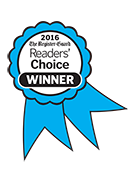

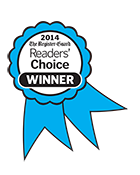
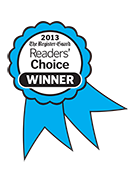

Here’s what our clients have to say:
“I have had many massages in my life and several in Eugene. I always end up going back to About Touch. Jennifer and her staff are so knowledgeable at what they do and I always feel better after my massage.”
OUR FEATURED POSTS
Wellness Is a Journey. We Can Help Get You There.
The Aromatic Bliss of Aromatherapy Massage
The Aromatic Bliss of Aromatherapy Massage In the realm of self-care and relaxation, a massage is often considered a luxurious escape from the hustle and bustle of daily life. Now, imagine elevating this [...]


